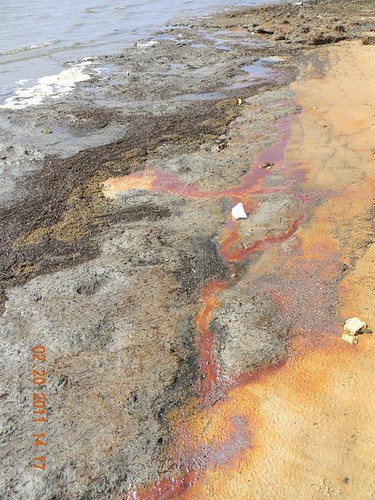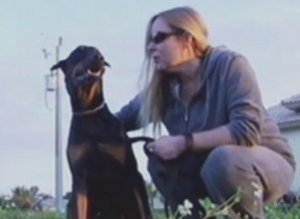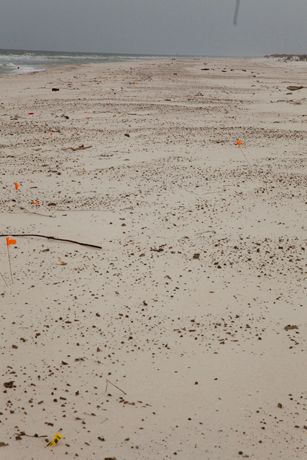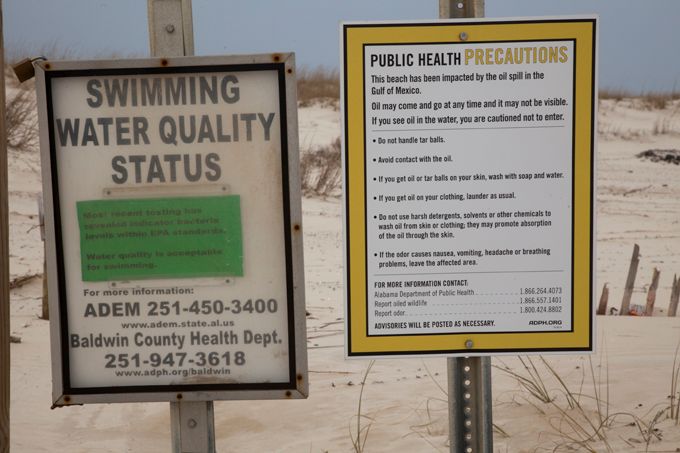FOR IMMEDIATE RELEASE
LA STATE SENATOR DEMANDS STOPPAGE OF TOXIC CHEMICALS IN THE GULF OIL CLEAN UP
February 10, 2011
TO: SENATOR HARRY REID, Senate Majority Leader
CONGRESSMAN JOHN BOEHNER, Speaker of the House of Representatives
CONGRESSMAN FRED UPTON, Chairman of the House Energy and Commerce Committee
CONGRESSMAN DARRELL ISSA, Chairman of the House Committee on Oversight and Reform
SENATOR JAMES INHOFE, Ranking Member, Committee on Environment and Public Works
CONGRESSMAN PAUL RYAN, Chairman of the Committee on the Budget
CONGRESSMAN JOHN MICA, Chairman of the Committee on Transportation and Infrastructure
CONGRESSMAN BOB GIBBS, Chairman of the Subcommittee on Water Resources and Environment
CC: GOVERNOR BOBBY JINDAL
SENATOR DAVID VITTER, SENATOR MARY LANDRIEU, REPRESENTATIVE STEVE SCALISE, REPRESENTATIVE CEDRIC RICHMOND, REPRESENTATIVE JEFFREY LANDRY, REPRESENTATIVE JOHN FLEMING, REPRESENTATIVE RODNEY ALEXANDER, REPRESENTATIVE BILL CASSIDY, REPRESENTATIVE CHARLES BOUSTANY
Dear Honorable Congressmen:
As of February 1st, 2011, it is estimated that between 800,000 and 4 million gallons of toxic chemical dispersants have been sprayed or poured into the Gulf of Mexico in an on-going operation. The broad-scale distribution of these poisonous substances has been justified by statements such as “trade-offs have to be made”.
The “tradeoffs” have been made and, because toxic dispersants were used, we now have millions of gallons of oil laced with toxic dispersants still suspended throughout the water column and on the sea floor, shifting constantly with the currents. This is causing severe, long-term harm to the public’s health, marine life, the environment, the economy and the Gulf’s way of life.
The EPA authorized the use of toxic chemical dispersants to sink the oil from the Deepwater Horizon oil accident violating the Clean Water Act, and the EPA (specifically Lisa Jackson, Dana Tulis, and Sam Coleman) with the help of NOAA, (specifically Jane Lubchenco, Ed Levine, and Charlie Henry) have blocked the efforts of the Coast Guard and the states of Louisiana, Mississippi, Florida and Alabama to protect their natural resources and the health, safety and welfare of their citizens as guaranteed by the 10th Amendment of the U.S. Constitution.
On January 16, 2011, I wrote a letter to President Obama (copy attached) requesting answers to a number of specific questions and serious concerns brought to my attention by my constituents. It’s been over three weeks since that letter arrived at the White House and, at this point, it appears that I will not get a response from the President or his administration.
Consequently, my constituents and I have decided to start a petition (viewable at www.agcrowe.com) which will be directed to you and launched within the next few days. Our goal is simple. We need your help to stop this destructive activity immediately and begin implementing proven, safe, non-toxic solutions which are already available and ready to be deployed.
Sincerely,
A.G. CROWE
District 1
State Senator
State of Louisiana
Attachments: Letter to President Barack Obama
Preview of Petition
Senator A.G. Crowe “Clean the Gulf” Petition
Please join Louisiana State Senator A.G. Crowe in demanding that proven, non-toxic solutions are immediately implemented to restore the Gulf of Mexico to its condition prior to BP’s oil rig blow out disaster.
TO:
SENATOR HARRY REID, Senate Majority Leader
CONGRESSMAN JOHN BOEHNER, Speaker of the House of Representatives
CONGRESSMAN FRED UPTON, Chairman of the House Energy and Commerce Committee CONGRESSMAN DARRELL ISSA, Chairman of the House Committee on Oversight and Reform SENATOR JAMES INHOFE, Ranking Member, Committee on Environment and Public Works CONGRESSMAN PAUL RYAN, Chairman of the Committee on the Budget CONGRESSMAN JOHN MICA, Chairman of the Committee on Transportation and Infrastructure CONGRESSMAN BOB GIBBS, Chairman of the Subcommittee on Water Resources and Environment
FROM:
CONCERNED U.S. CITIZENS
PETITION
PREAMBLE
As of February 1st, 2011, it is estimated that between 800,000 and 4 million gallons of toxic chemical dispersants have been sprayed or poured into the Gulf of Mexico in an on-going operation. The broad-scale distribution of these poisonous substances has been justified by statements such as “trade-offs have to be made.”
The “tradeoffs” have been made and, because toxic dispersants were used, we now have millions of gallons of oil laced with toxic dispersants still suspended throughout the water column and on the sea floor, shifting constantly with the currents. This is causing severe, long-term harm to the public’s health, marine life, the environment, the economy and the Gulf’s way of life.
Therefore, we respectfully submit the following petition:
- Whereas, the U.S. Presidential oath of office calls for the preservation of the nation’s natural resources, and that responsibility is delegated to the Environmental Protection Agency (EPA);
- Whereas, the EPA (specifically Lisa Jackson, Dana Tulis, and Sam Coleman) with the help of NOAA, (specifically Jane Lubchenco, Ed Levine, and Charlie Henry) have blocked the efforts of the Coast Guard and the states of Louisiana, Mississippi, and Alabama to protect their natural resources and the health, safety and welfare of their citizens as guaranteed by the 10th Amendment of the U.S. Constitution;
- Whereas, the EPA authorized the use of toxic chemical dispersants to sink the oil from the Deepwater Horizon oil accident violating the Clean Water Act;
- Whereas, those chemical dispersants, and particularly all versions of the product called Coexist, have been proven, by scientific studies, to have made the BP Horizon accidental discharge worse than if the oil had been allowed to float to the surface, where it could have been collected;
- Whereas, per scientific studies, the toxic chemical dispersants have polluted large and indefinable areas of the Gulf waters, making them unpredictable and unsafe for all living organisms;
- Whereas, per scientific studies, the toxic chemical dispersants have contaminated much of our Gulf’s seafood, endangered the public’s health, shaken the public’s confidence in the quality of our seafood, and prolonged the recovery of the seafood and tourism industries;
- Whereas, the public’s health has been put at great risk, as can be seen by the alarming rise in health problems which can be directly linked to exposure to the toxic chemical dispersants and dispersed oil;
- Whereas, per scientific studies, Coexist is a biocide which kills the natural microorganisms that break down oil, retarding the degradation of the oil itself, and is, thus, a continuing threat to all life in the Gulf;
- Whereas, there are on-going reports of the illegal continued spraying of Coexist on the Gulf’s waters and its shorelines;
- Whereas, toxic chemical dispersants are destroying the Gulf’s economy and its way of life;
- Whereas, there are EPA-known, non-toxic, bioremediation solutions which could have been used in the first few weeks of the BP Horizon accidental discharge which would have prevented the majority of the damage to the marine life, the environment, and the public’s health which resulted from the oil well blow out;
- Whereas, these same non-toxic bioremediation solutions can still be used to thoroughly and quickly clean up the oil and the toxic chemical dispersant, and reverse the damage to the Gulf;
- Whereas, the implementation of bioremediation technology is a fraction of the cost of other cleanup methods currently being used and would save the U.S. government untold wasted funds;
- Whereas, there are non-toxic, first-response, bioremediation products that are already on the Environmental Protection Agency’s (EPA) National Contingency Plan (NCP) list of approved products for use in cleaning up oil spills;
- Whereas, the EPA has provided no valid scientific reason for withholding permits for the full and immediate implementation of thoroughly vetted and demonstrably workable, non-toxic, bioremediation remedies designed to fully detoxify and remediate both the oil and the toxic dispersant within two to four weeks;
- Whereas, non-toxic bioremediation methods create clean, healthy waters which would allow the restoration of jobs in the fishing, tourism and oil/gas industries, as well as all other related commerce,
We, the people, do hereby formally request that:
- Our federal oversight trustees acknowledge and adhere to the formal demands of the Gulf Coast States (Louisiana, Mississippi, Alabama, Texas and Florida) requesting that proven, first-response, EPA-certified, NCP-classified, non-toxic, bioremediation products be immediately implemented to clean up the contamination from the oil and toxic dispersants present in our gulf waters, tidal zones and marshes, so that our natural resources can be returned to pre blow-out conditions, and
That the use of toxic chemical dispersants, such as Coexist or any other scientifically-identified, toxic dispersant, be banned immediately in U.S. navigable waters.














 Tweet This
Tweet This  Buzz This
Buzz This 







First Posted: 02/24/11 09:14 PM Updated: 02/24/11 09:18 PM